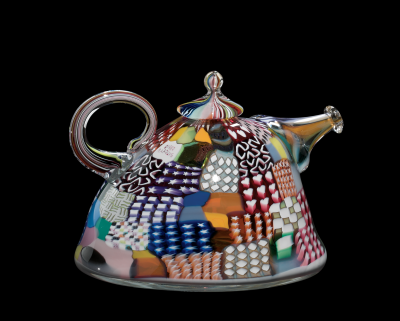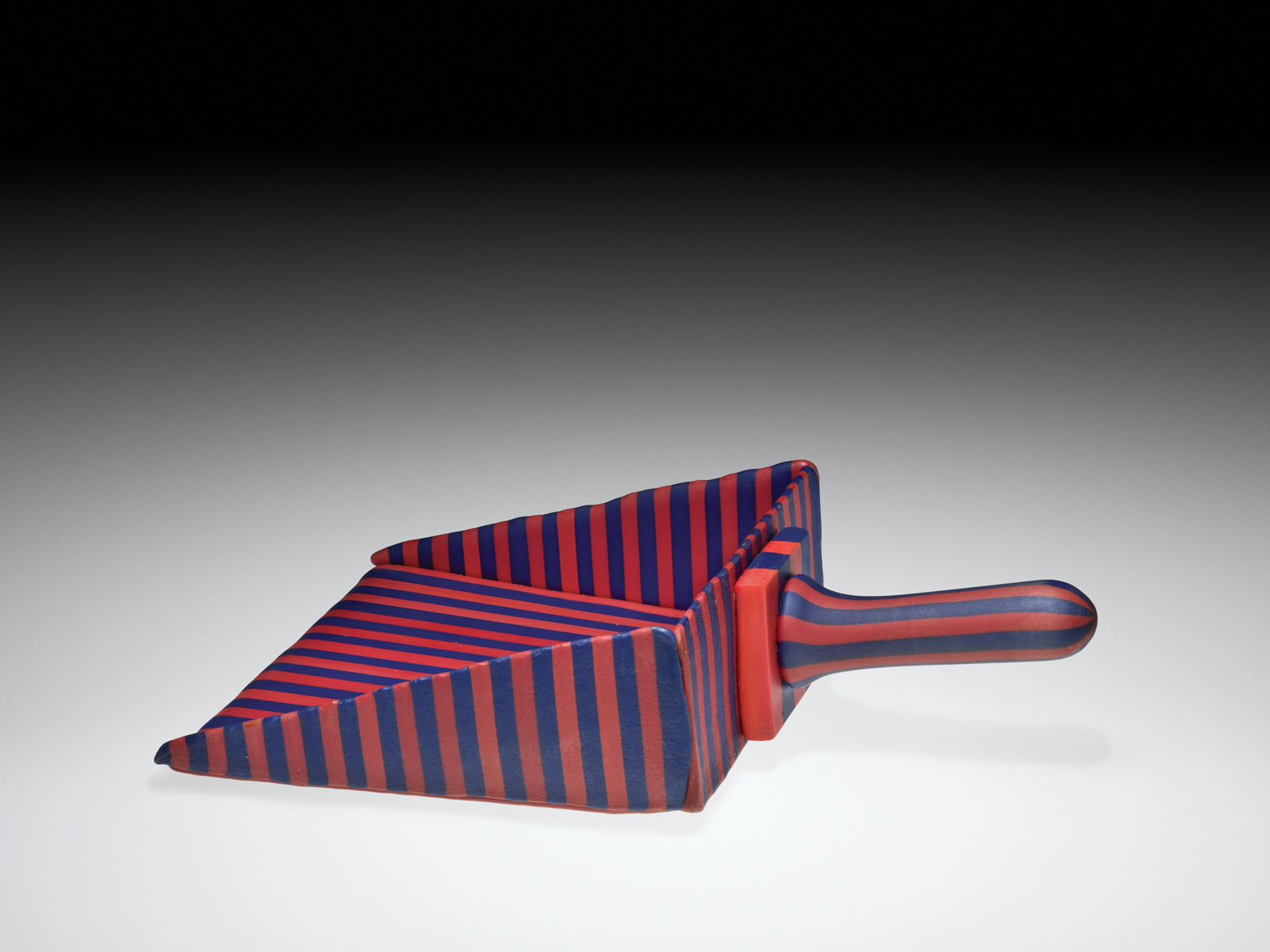 Richard Marquis, Crazy Quilt Teapot #38, 1980. Fused and blown murine. H 4 1/4 in. collection: corning museum of glass
Richard Marquis, Crazy Quilt Teapot #38, 1980. Fused and blown murine. H 4 1/4 in. collection: corning museum of glass
February 16th 2013, will see the opening of a retrospective of the colorful and highly influential work of Richard Marquis. Titled “Masters of Studio Glass: Richard Marquis,” the year-long exhibition at The Corning Museum of Glass honors the veteran innovator of the American Studio Glass movement for his four-decade-plus oeuvre. Marquis is known for his unique approach that marries rigorous Venetian-influenced technique to a lively sense of humor, often spiced with an irreverent counter-cultural outlook. A total of 30 of Marquis’ pivotal pieces spanning the years 1967-2012 will be displayed as part o The Corning Museum’s ongoing “Masters of Studio Glass“ exhibition series.
 Richard Marquis, Stars and Stripes Acid Capsule #4, 1969-70. Solid, hotworked, murrini, cane. (Made at Venini, Murano). L 4 in. collection: corning museum of glass. gift: the artist
Richard Marquis, Stars and Stripes Acid Capsule #4, 1969-70. Solid, hotworked, murrini, cane. (Made at Venini, Murano). L 4 in. collection: corning museum of glass. gift: the artist
Marquis is notable as one of the first American glassmakers to actively adopt traditional Venetian methods of glassblowing, which he studied while visiting Murano’s legendary Venini glassworks on a Fulbright grant from U.C. Berkeley in 1969. American Studio Glass has benefited from his imported knowledge of Venetian techniques including solid hot-worked murrine, filigrana, millefiori, zanfirico, a canne, incalmo, and granulare (which he singlehandedly revived). Already then known to be one of the top technical workers in glass, Marquis continued to finesse a distinctive visual language by applying his mastery of Italian artisanal methods to American subject matter. One of the well-known standout pieces produced during his time abroad is Stars and Stripes Acid Capsule #4 (1969).
A collector, Marquis reboots found objects with glass elements so that we may experience the mundane props of daily life as candied cultural relics. Applying time-worn traditional craft to low-brow objects in this way, he catalyzes a reexamination of glass art, while securing the viewer’s enjoyment through very direct aesthetic appeal and humor. See for example 2004’s Dust Pan series, Crazy Quilt Teapot #38 (1980), and Lord’s Prayer (1971), each epitomizing his deliberate sense of whimsy and irony, expressed through craftsmanship that is never short of exquisite. Although cultural commentary is very much present in these works, Marquis has preferred to steer clear of conceptual attributions, instead allowing the focus to fall on looks.
 Richard Marquis, Dustpan #04-6, 2004. Kiln formed, slab construction, cut. W 15 1/2 in.
Richard Marquis, Dustpan #04-6, 2004. Kiln formed, slab construction, cut. W 15 1/2 in.
“Masters of Studio Glass: Richard Marquis” showcases some of the works in glass that have earned him a slew of awards, including Lifetime Achievement Awards by the Glass Art Society and by the Art Alliance for Contemporary Glass, as well as the James Renwick Alliance Masters of the Medium Award, Smithsonian Institute.
—Shirin Borthwick
IF YOU GO:
“Masters of Studio Glass: Richard Marquis”February 16, 2013 — February 2, 2014Corning Museum of Glass1 Museum WayCorning, NY 14830Tel: (607) 937-5371Website: http://www.cmog.org/


